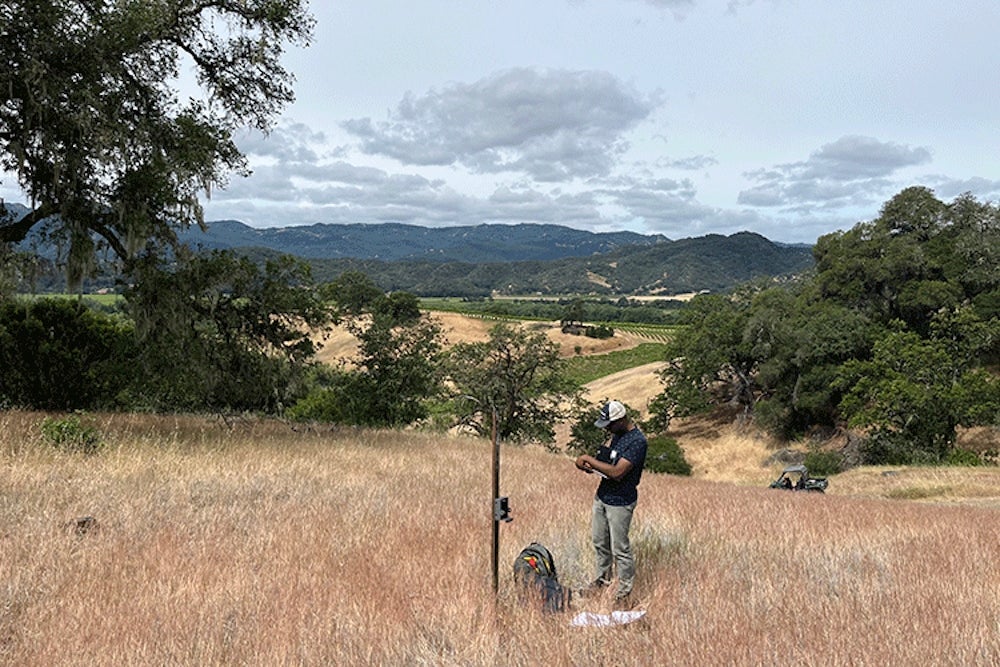
California’s Mendocino Complex Fire, which started in July of 2018, was composed of two separate wildfires: the Ranch Fire and the River Fire. The Ranch Fire affected more than 410,000 acres, while the River Fire impacted around 48,900 acres, according to the U.S. Bureau of Land Management.
The massive wildfire spread quickly and burned for more than five months, destroying, among other areas, University of California’s Hopland Research and Extension Center (HREC), a multidisciplinary education and research facility just south of Ukiah on the Russian River, according to a press release from Berkeley News.
“It felt like something out of the Lord of the Rings — like Mordor. It was hard to imagine much surviving,” said Justin Brashares, a professor of environmental science, policy and management at the University of California, Berkeley (UC Berkeley), in the press release.
The good news is that, just months following the fire, animals who called the ravaged Northern California habitat on either side of Clear Lake home — including gray foxes, coyotes and black-tailed jackrabbits — were spotted by motion-triggered camera traps.
“We were surprised that many species seem to be resistant [to the impacts of the fire],” said Kendall Calhoun, a UC Berkeley graduate student and member of Brashares’ lab, in the press release.
In order to get a feel for the impact the enormous fire had on the small- and medium-sized animals living on the HREC’s 5,300 acres, Calhoun and a team of researchers looked at more than half a million photographed grid images that had been taken there before and following the Mendocino Complex Fire.

The study, “Mammalian resistance to megafire in western U.S. woodland savannas,” was published in the journal Ecosphere.
The study was one of the first to analyze observations of wildlife preceding and after a megafire. It was also one of few studies to look specifically at how megafires affect the state’s oak woodlands. These types of ecosystems cover a large area of the state, but have not been adequately represented in research related to wildfires in comparison with Sierra Nevada’s conifer forests.
“For the great majority of Californians, these oak woodlands and grassland savannahs are what we think of as the characteristic biome or ecosystem type for our state,” Brashares said in the press release. “It’s the primary ecosystem type for livestock grazing, and it’s also the primary habitat type that’s used to grow grapes for wine. It’s a critical ecosystem type, and it’s worth managing well.”
The researchers studied eight animal species, and found that six were “resistant” to the fire’s impacts. These animals — racoon, gray fox, black-tailed jackrabbit, coyote, bobcat and striped skunk — used the area affected by the fire as often and in the same manner as they had before. Two species, black-tailed deer and western gray squirrel, seemed to be more susceptible to the fire’s aftermath.
Camera trap photos showed many of the animals taking refuge in small patches of remaining tree cover — in some cases more frequently than before the fire — and the researchers thought the remaining canopy gave these species the food and resources they needed to remain.
“Megafire had a negative effect on the detection of certain mammal species, but overall, most species showed high resistance to the disturbance and returned to detection and site use levels comparable to unburned sites by the end of the study period. Following megafire, species richness was higher in burned areas that retained higher canopy cover relative to unburned and burned sites with low canopy cover. Fire management that prevents large-scale canopy loss is critical to providing refugia for vulnerable species immediately following fire in oak woodlands, and likely other mixed-forest landscapes,” the researchers wrote in the study.
The camera traps also took photos of apex predators like mountain lions and black bears who have home ranges often much larger than the land comprising the HREC, so an accurate idea of their distribution wasn’t possible from the study area.
However, Calhoun said the larger animals weren’t seen nearly as often following the fire, which indicates they were not as quick to revisit the habitat affected by the megafire.
According to the press release, the findings of the study emphasize the importance of prescribed burning and grazing in order to reduce wildfire intensity, since it is more likely that tree cover will be intact following less severe fires.
“Even this incredibly hot and devastating fire still managed to leave behind these little patches of unburnt areas, and we were surprised at how quickly many species were able to move into those habitat patches and then spread back out into the burned areas as they recovered,” Brashares said in the press release. “This finding is very valuable for forest management because we can do things to the landscape that will increase the chance that when fire does come through, it will leave behind some of these fragments.”
The post Animals Return Home Following 2018 Northern California Complex Fire appeared first on EcoWatch.
